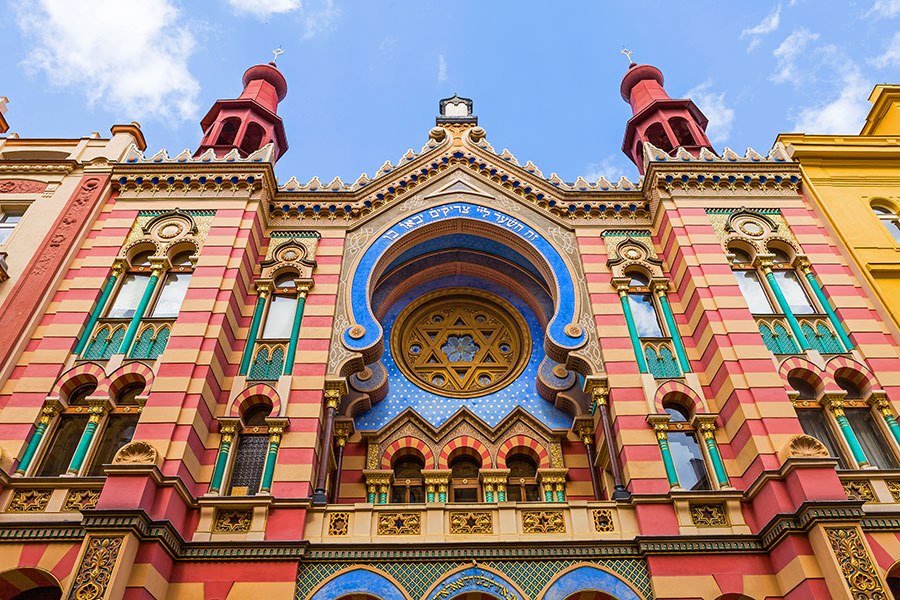#5873. Polychromatic Moorish-Style Synagogue Façade
Before us stands a magnificent example of eclectic architecture with distinct Moorish influences - the façade of a synagogue, remarkable for its decorative richness and color palette. The structure demonstrates the polychromatic approach typical of synagogue architecture from the late 19th century.
The central part of the façade features an expressive portal with a blue horseshoe arch, adorned with ornamental patterns and crowned by the Star of David in a circular window. This arch, characteristic of Moorish style, becomes both the semantic and architectural focal point of the composition. The façade is flanked by two symmetrical towers with onion domes, adding vertical emphasis to the building's overall silhouette.
The color scheme is particularly striking: pink-red brickwork contrasts with turquoise decorative window grilles and the rich blue of the central arched element. The yellow section on the right adds another picturesque accent. The abundance of decorative details is astonishing: elegant columns, carved capitals, stucco embellishments, and complex ornamental friezes create an impression of festivity and solemnity.
This is an excellent example of the "Moorish Revival" in European synagogue architecture, when architects turned to Spanish-Moorish motifs, emphasizing connections to Sephardic traditions and creating a recognizable style for Jewish religious buildings that distinguished them from the dominant Christian architecture.
